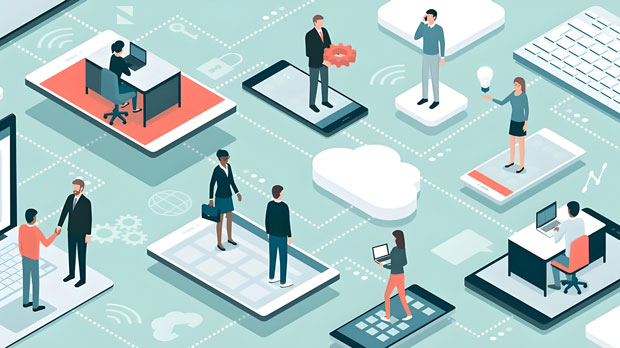Setting up residential proxy IPs can seem complicated at first, but with the right approach, you can ensure a seamless browsing experience while maintaining anonymity online. residential proxies allow you to appear as if you're browsing from a real residential address, making them ideal for tasks like web scraping, accessing region-restricted content, or simply ensuring privacy. In this article, we will explore the process of configuring residential proxy ips using Proxy Proxy Proxy, step by step, ensuring that you can take full advantage of its capabilities for various online tasks. What Are Residential Proxies?Residential proxies are real IP addresses provided by Internet Service Providers (ISPs) to homeowners. These proxies are commonly used to mask the user's actual location and IP, allowing for more secure and anonymous browsing. They are distinct from datacenter proxies because they appear as genuine users, reducing the likelihood of being detected by websites or online services. When using residential proxies, you are essentially routing your internet traffic through a device located at a specific physical address, which makes it harder for websites to trace and block you.Why Choose Residential Proxies Over Datacenter Proxies?The primary advantage of residential proxies over datacenter proxies is the low likelihood of being blocked or flagged. Datacenter proxies come from data centers, and since many people use them, websites often detect and block them quickly. In contrast, residential proxies come from actual residential locations, which makes them appear as regular users browsing the web. This makes them perfect for tasks like web scraping, bypassing geographic restrictions, or maintaining privacy while browsing.Furthermore, residential proxies offer better reliability and more consistent performance because they are more difficult for websites to identify as proxy traffic. This allows for uninterrupted access to websites, which is especially important for high-volume tasks like SEO analysis, social media management, or data extraction.How to Set Up Residential Proxies Using Proxy Proxy Proxy?Setting up residential proxies can be done with a few simple steps, and using Proxy Proxy Proxy streamlines the process, making it easy for users to configure and maintain their proxies.Step 1: Select a Reliable Proxy ServiceBefore you begin setting up your residential proxy, it's crucial to choose a reliable proxy service. Not all proxy services are created equal, and the quality of the proxies you use will directly impact the success of your online tasks. Look for services that provide high-quality, fast, and secure residential IP addresses.When selecting a provider, consider factors such as speed, geographic location options, and the variety of IP addresses available. Make sure that the service offers the ability to customize your proxy settings, including IP rotation and session control, to ensure that your usage remains undetected by websites.Step 2: Obtain Proxy Details from Your ProviderOnce you've chosen a proxy service, the next step is to obtain your proxy details. These typically include:- IP Address: The IP address of the residential proxy server.- Port: The port number used for communication with the proxy server.- Username and Password: For authenticated proxies, you will need a username and password to authenticate your connection.- Location Information: Some services allow you to select the specific country or city from which you want the proxy to originate.This information is essential for configuring the proxy settings on your device or software.Step 3: Configure Proxy SettingsAfter obtaining the necessary proxy details, you will need to configure your proxy settings. The exact process varies depending on your device or software, but generally, you will need to follow these steps:1. Access Proxy Settings: Open the network or internet settings of the device or software you intend to use.2. Enter Proxy Details: Input the IP address, port, and any required authentication details (username and password) provided by your proxy service.3. Select the Protocol: Choose the correct protocol (HTTP, HTTPS, or SOCKS5) based on the instructions provided by your service.4. Enable Proxy Rotation (Optional): Many proxy services allow you to rotate IPs at regular intervals. This feature can help avoid detection and ensure that you don’t get blocked while using the proxy.5. Test the Connection: After entering the proxy details, test the connection to ensure that your device is properly routing traffic through the residential proxy. This can be done by visiting a website that shows your IP address and confirming that it matches the proxy IP.Step 4: Use Proxy Proxy Proxy for Advanced SettingsProxy Proxy Proxy is a tool designed to simplify the management of multiple proxies. This tool can help you easily switch between different proxy ips and manage large numbers of requests. Here’s how to make use of Proxy Proxy Proxy effectively:1. Configure IP Rotation: Proxy Proxy Proxy allows you to set up automatic IP rotation, so you don't have to manually change IP addresses every time. This is especially useful for tasks that require high anonymity and frequent access to websites.2. Manage Sessions: If you need to maintain a specific session or task, Proxy Proxy Proxy can store session information and ensure that your requests are consistent across different IP addresses.3. Monitor Usage: Proxy Proxy Proxy typically provides a dashboard where you can monitor the status of your proxies, check usage statistics, and receive alerts if there are any issues with your proxies.Step 5: Troubleshoot Common IssuesWhile using residential proxies, you may encounter a few common issues, such as slow speeds, connection failures, or being blocked by websites. Here are some troubleshooting steps:- Check Proxy Details: Ensure that the proxy details (IP, port, username, and password) are correctly entered.- Test Different Locations: If you're experiencing slow speeds, try switching to a different geographic location provided by your proxy service.- Verify Authentication: Double-check the authentication details if your proxy requires login credentials.- Ensure Proper Rotation: If you're using IP rotation, make sure that the rotation settings are working as expected.ConclusionSetting up residential proxy IPs with Proxy Proxy Proxy is an efficient way to ensure anonymity, bypass restrictions, and improve online performance. By following the steps outlined above, you can easily configure and maintain your proxies for a variety of tasks, from web scraping to secure browsing. Remember to choose a reliable proxy provider, properly configure your proxy settings, and utilize tools like Proxy Proxy Proxy for advanced management and troubleshooting. With the right setup, residential proxies can significantly enhance your online activities, offering privacy, security, and reliability.
Jul 16, 2025



































































